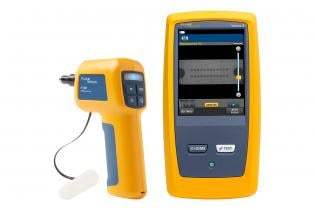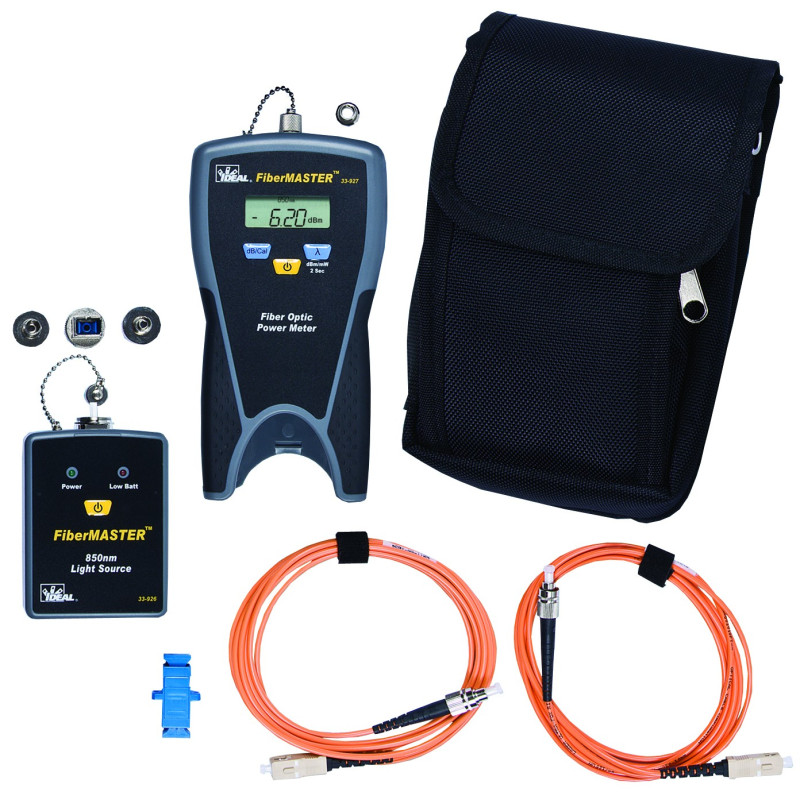Comprehending Just How an Optical Measurement System Enhances Precision in Industrial Applications
Optical measurement systems play an important role in improving precision across different commercial applications. By leveraging innovative modern technologies such as laser interferometry and 3D imaging sensing units, these systems provide high-resolution, non-contact dimensions. This capability reduces the risk of damaging sensitive elements while making certain accuracy. The influence of these systems prolongs past simple measurements. Discovering their benefits, applications, and future fads exposes a complex landscape of technology and difficulties that benefits better assessment.
The Fundamentals of Optical Measurement Systems
Optical measurement systems act as crucial devices in numerous industrial applications, giving specific information collection and evaluation. These systems utilize light as a key means of measurement, leveraging optical principles to examine dimensions, placements, and surface qualities of items. They incorporate components such as lasers, electronic cameras, and sensing units, which function with each other to record high-resolution images and information.
The modern technology allows non-contact dimensions, decreasing the risk of damaging delicate elements. Optical measurement systems are functional, discovering utility in quality assurance, assembly verification, and dimensional analysis throughout various fields. They are especially efficient in atmospheres where traditional measurement techniques may fall short, such as determining complex geometries or observing rapid motions.
As markets proceed to progress, the integration of optical measurement systems will continue to be important for making certain accuracy and performance, eventually enhancing product quality and operational performance in numerous manufacturing procedures.
Secret Technologies Behind Optical Measurement
Key innovations such as laser interferometry strategies and 3D imaging sensors play an important role in the effectiveness of optical measurement systems (optical measurement system). These modern technologies allow exact dimensions and thorough evaluation in different commercial applications. Understanding their performances is crucial for using the complete capacity of optical measurement systems
Laser Interferometry Techniques
Various laser interferometry methods have actually changed the field of optical measurement, supplying unprecedented accuracy and accuracy in numerous commercial applications. These methods utilize the interference of meaningful light waves to gauge distance, displacement, and surface abnormalities with nanometer-level precision. Usual techniques include Michelson interferometry, which splits a beam of light and assesses phase shifts, and Fabry-Pérot interferometry, known for its high resolution in measuring little modifications. Furthermore, laser Doppler interferometry employs regularity shifts to analyze speed, making it very useful in vibrant dimensions. The adaptability of these strategies enables their integration right into diverse manufacturing procedures, improving quality assurance and making certain adherence to rigorous tolerances. Therefore, laser interferometry proceeds to play an important duty beforehand industrial measurement requirements.
3D Imaging Sensors
Advancements in measurement technology have caused the advancement of 3D imaging sensors, which play a substantial function in optical measurement systems. These sensors record three-dimensional data through numerous methods such as triangulation, time-of-flight, and structured light. By properly rebuilding the form and measurements of things, 3D imaging sensors boost the accuracy of dimensions in industrial applications. They provide real-time responses, facilitating quality assurance and making sure that elements meet rigid requirements. In addition, their ability to operate in challenging atmospheres, such as varying lights conditions, makes them important in producing processes. As markets progressively adopt automation, the combination of 3D imaging sensors right into optical measurement systems is anticipated to drive further enhancements in performance and precision.
Benefits of Optical Measurement in Market
Although typical measurement methods have long been the criterion in industrial setups, optical measurement systems use substantial benefits that enhance precision and performance. These systems utilize light to record data, resulting in high-resolution measurements that are frequently unattainable with traditional methods. The non-contact nature of optical measurements lowers the risk of damaging delicate elements during the analysis process. Furthermore, the rate of optical measurements allows for fast information purchase, helping with timely decision-making in fast-paced industrial atmospheres.
Optical systems are adaptable, efficient in determining various products and forms without the requirement for comprehensive recalibration. This flexibility contributes to improved process and performance. The automation potential of optical measurement systems reduces human error, ensuring regular top quality control. Overall, the combination of optical measurement technology stands for a modern shift towards boosted accuracy that site and reliability in commercial operations, eventually bring about enhanced item quality and functional effectiveness.
Applications of Optical Measurement Systems

Optical measurement systems play an essential role in enhancing production process optimization by giving accurate information for decision-making. These systems assure quality assurance assurance with real-time monitoring and evaluation of production metrics. As markets increasingly embrace these technologies, their influence on efficiency and item reliability comes to be apparent.
Production Refine Optimization
Enhancing manufacturing procedure effectiveness is significantly dependent on the combination of optical measurement systems. These systems supply real-time data on numerous criteria, enabling producers to analyze procedures with a high degree of precision. By allowing exact dimensions of measurements, surface area qualities, and product residential or commercial properties, optical measurement systems help with the identification of inadequacies and bottlenecks in production lines. The instant comments from these systems equips designers to make educated decisions, causing maximized machining, setting up, and completing procedures. The ability to monitor conditions continuously permits for adaptive adjustments, minimizing downtime and waste. As sectors purpose for greater productivity and lowered operational prices, optical measurement systems become essential tools for improving manufacturing procedure optimization.

Top Quality Control Guarantee
The assimilation of optical measurement systems considerably impacts quality assurance guarantee in industrial settings. These systems offer accurate and non-destructive measurements, making it possible for producers to identify issues and variances early in the manufacturing process. By using innovative imaging strategies, such as laser triangulation and interferometry, optical measurement systems ensure that parts meet strict specs. This helps with real-time surveillance, lowering waste and decreasing the threat of damaged items reaching the marketplace. In addition, the data collected can be evaluated to improve manufacturing processes additionally, causing continuous renovation. Eventually, the fostering of optical measurement systems boosts integrity and uniformity in top quality control, cultivating higher self-confidence among stakeholders and clients alike in the last products provided.
Instance Researches: Successful Implementations
Numerous industries have effectively integrated optical measurement systems to boost their operational efficiency and product top quality. For example, in the auto industry, a noticeable maker embraced a laser triangulation system to check the alignment of car parts. This application greatly decreased setting up mistakes, bring about enhanced safety and reduced costs.
In the aerospace industry, a leading aircraft supplier utilized optical metrology for accuracy dimensions of generator blades, achieving a decrease in manufacturing resistances and better efficiency requirements.
A customer electronics company implemented optical measurement technology throughout the production of smartphone displays, resulting in boosted quality control and a reduction in faulty products.
These instance researches illustrate exactly how optical measurement systems not only boost precision but also add to general operational performance, showing their worth throughout various fields. By dealing with certain requirements, these systems have proven to be crucial tools in modern commercial applications.
Difficulties and Limitations of Optical Measurement
While optical measurement systems offer substantial benefits in numerous commercial applications, they are not without their difficulties and restrictions. One significant issue is level of sensitivity to ecological problems, such as temperature variations, moisture, and dirt, which can adversely affect measurement precision. Furthermore, optical systems commonly need precise alignment and calibration, making them prone to human mistake during arrangement and procedure. An additional constraint is the possibility for interference from ambient light, which can distort dimensions and require complicated filtering system techniques. Particular products and surface areas may provide troubles, as reflective or transparent attributes can lead to inconsistent analyses. The expense of high-grade optical components and systems can likewise be a barrier for some markets, restricting extensive fostering. Specialized training is usually needed for personnel to properly run and preserve these systems, adding to the general intricacy and operational difficulties.
Future Fads in Optical Measurement Innovation
As advancements in modern technology remain to shape commercial processes, the future of optical measurement systems is poised for substantial evolution. Arising fads indicate a change in the direction of enhanced integration of man-made intelligence and artificial intelligence, check that making it possible for systems to examine information in real-time, recognize patterns, and enhance decision-making procedures. Furthermore, the advancement of miniaturized sensing units and advanced optics is anticipated to lead to even more compact and flexible measurement solutions, making them available for a larger variety of applications.
In addition, the unification of 3D imaging and high-resolution capabilities will permit unprecedented accuracy in dimensions, which is vital for sectors such as aerospace and automobile. The push for automation and Industry 4.0 will certainly also drive the need for optical measurement systems that can easily interface with various other modern technologies. As these patterns unfold, optical measurement systems will likely become indispensable to achieving higher effectiveness and accuracy throughout numerous industrial fields.

Frequently Asked Questions
Exactly How Do Optical Measurement Systems Contrast to Typical Measurement Techniques?
Optical measurement systems use higher accuracy and speed contrasted to conventional techniques - optical measurement system. They minimize human mistake, boost data collection performance, and offer real-time outcomes, making them increasingly favored in various commercial applications for exact dimensions
What Industries Advantage the Most From Optical Measurement Systems?
Optical measurement systems considerably profit sectors such as aerospace, automotive, and electronics. Their ability to supply high-precision dimensions enhances top quality control, reduces production mistakes, and boosts overall performance, making them important in competitive production settings.
Can Optical Measurement Systems Be Personalized for Specific Applications?
Optical measurement systems can undoubtedly be personalized for certain applications. By readjusting specifications such as wavelength, resolution, and calibration strategies, markets can customize these systems to satisfy one-of-a-kind precision and accuracy needs efficiently.
What Is the Maintenance Demand for Optical Measurement Systems?
The upkeep demands for optical measurement systems commonly consist of normal calibration, cleaning of optical components, and software updates. Complying with these techniques warranties accuracy, dependability, and long life of the measurement equipment in numerous applications.
Just How Do Ecological Elements Affect Optical Measurement Accuracy?
Ecological variables, such as temperature level changes, moisture, and dust, significantly influence optical measurement accuracy. These elements can distort light courses and hinder sensor analyses, ultimately why not look here endangering the dependability and precision of measurements in industrial setups.